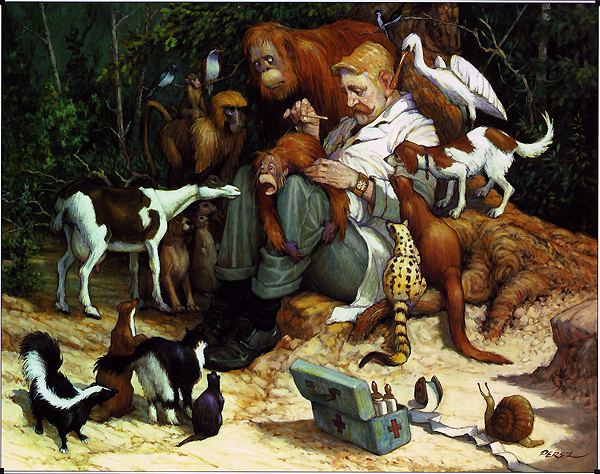Wildlife Conservation and the Role of Veterinarians
I am fairly certain we are all familiar, at least in a general sense, what the term wildlife conservation refers to. In technical terms, according to Wikipedia, wildlife conservation is the practice of preserving and protecting animal and plant species that are at risk and the unique habitats in which they naturally reside. The primary purpose of wildlife conversation is to guarantee that the many wonderful organisms and life forms that share this Earth with us are around for our future generations to enjoy. As humanity grows, however, wildlife shrinks. This is, unfortunately, a real problem that we have yet to find a lasting solution for. The effects of climate change/global warming, excessing poaching and hunting, deforestation, pollution, and overuse of our planet's resources have put a strain on the species that make up wildlife. But, perhaps the greatest threat to wildlife is the indifference of the public to the rapidly deteriorating state of our wildlife, especially during a time when support for conservation efforts is needed most. Did you know that animals like the gorillas, the blue whale, many species of elephants, tigers, and rhinos are endangered species? With current trends, they will not last more than a century.
In fact, wildlife conservation is an area in which veterinarians have, with time, become increasingly involved in. As more and more living species of animals and plants make their way onto the endangered species list, veterinarians are finding the demand for their services and expertise in the area of conservation going through the roof.
Veterinary medicine helps to preserve biodiversity in a number of ways. Veterinarians go directly out on the field to help animals in need, such as those who are injured by poachers, populations which are at risk for serious animal diseases, simply to check up on the health of species, and many others. These are the veterinarians that people often think of when they think of veterinary conservation efforts. But, there is also another group of veterinarians that get less attention. These are the veterinary researchers that work (oftentimes in the confines of a laboratory) alongside other professionals in other fields, such as microbiologists, epidemiologists, biologists, and pathologists towards a common goal: conserving our wildlife and the many marvelous species that make it worth saving.
Veterinary medicine helps to preserve biodiversity in a number of ways. Veterinarians go directly out on the field to help animals in need, such as those who are injured by poachers, populations which are at risk for serious animal diseases, simply to check up on the health of species, and many others. These are the veterinarians that people often think of when they think of veterinary conservation efforts. But, there is also another group of veterinarians that get less attention. These are the veterinary researchers that work (oftentimes in the confines of a laboratory) alongside other professionals in other fields, such as microbiologists, epidemiologists, biologists, and pathologists towards a common goal: conserving our wildlife and the many marvelous species that make it worth saving.


I would hate to imagine a world without animals like tigers and elephants. These animals have made a huge impact on human culture. There are gods modeled after some of these animals. I actually didn't know that there are veterinarians that go out in search of animals that need help. I want to end this comment by saying, that you can tell that you are putting an immense amount of effort into your blog. Great job!
ReplyDeleteIt is great you are bringing attention to this global issue, actions must certainly take place in order to create a resolution to these problems. Our animals must be protected, great job on your blog so far!
ReplyDeleteThe world needs more people to care about eh environment and the effect we are having on animals. We need to preserve wildlife for our next generations to enjoy.
ReplyDelete